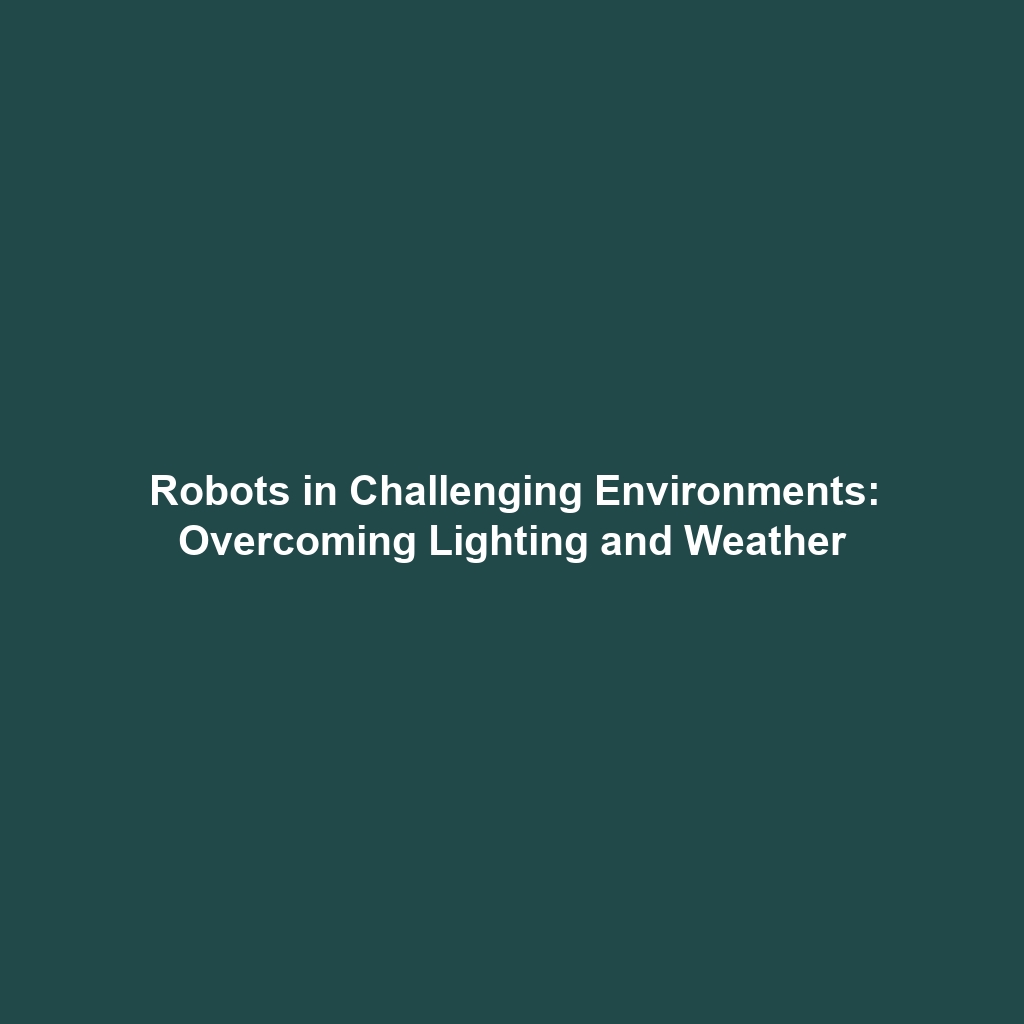Robots’ Limitations in Handling Variable Lighting, Weather Conditions, and Obstacles
Introduction:
As technology advances, the development of autonomous robots has begun to play a critical role in various industries, ranging from agriculture to disaster response. However, a significant barrier remains: the limitations of robots in handling variable lighting, weather conditions, and obstacles. Understanding these limitations is essential not only for improving robot design but also for ensuring their safe and effective deployment in real-world scenarios. In this article, we will delve into the complexities of how environmental factors affect the operational capabilities of autonomous robots.
Key Concepts
The following key concepts underpin the challenges faced by autonomous robots when navigating variable environments:
- Lighting Conditions: Robots often rely on cameras and sensors that may struggle in low-light or overly bright conditions, leading to navigation problems.
- Weather Factors: Rain, snow, fog, and other weather phenomena can obscure vision for sensors and damage sensitive equipment.
- Obstacle Detection: Autonomous robots must efficiently identify and react to obstacles, which can be significantly hindered in adverse environmental conditions.
Environmental Adaptability
For autonomous robots to be effective, they need to adjust to changing lighting and weather conditions, necessitating advanced sensing technologies and algorithms capable of real-time adjustments.
Applications and Real-World Uses
The challenges associated with variable lighting, weather conditions, and obstacles significantly impact the applications of autonomous robots across various sectors:
- Search and Rescue Operations: Robots are deployed in disaster-stricken areas, but varying lighting and severe weather can limit their effectiveness.
- Agricultural Automation: Unpredictable weather can affect crop monitoring and harvesting robots’ ability to function optimally.
- Transportation and Delivery Systems: Self-driving vehicles face obstacles in navigation due to environmental challenges, highlighting the need for improved technologies.
Current Challenges
Despite progress, several challenges emerge when studying or relying on autonomous robots in dynamic conditions:
- Sensor Limitations: Current sensors may not perform well across all lighting conditions and weather scenarios.
- Complex Algorithms: Developing algorithms that can adapt to real-time changes in the environment presents a significant challenge.
- Cost of Technology: The integration of more advanced sensors and systems can be prohibitively expensive for widespread use.
Future Research and Innovations
Innovations aimed at addressing the limitations faced by autonomous robots are crucial for their future applications:
- Advanced Sensor Technologies: Future research focuses on developing better sensors that can adjust dynamically to environmental changes.
- Machine Learning Integration: Integrating machine learning techniques can create adaptive algorithms capable of intelligent decision-making in variable conditions.
- Collaborative Robotics: Innovations in design may facilitate collaborative robots that can share information between units to enhance navigation and obstacle detection.
Conclusion
In summary, understanding the limitations of robots in handling variable lighting, weather conditions, and obstacles is critical to advancing the field of autonomous robots. Overcoming these challenges not only enhances robot functionality but also expands their applications across various sectors. For continued updates and insights into this rapidly evolving field, consider exploring other topics such as Advanced Robotics Technologies or Environmental Sensor Innovations.

